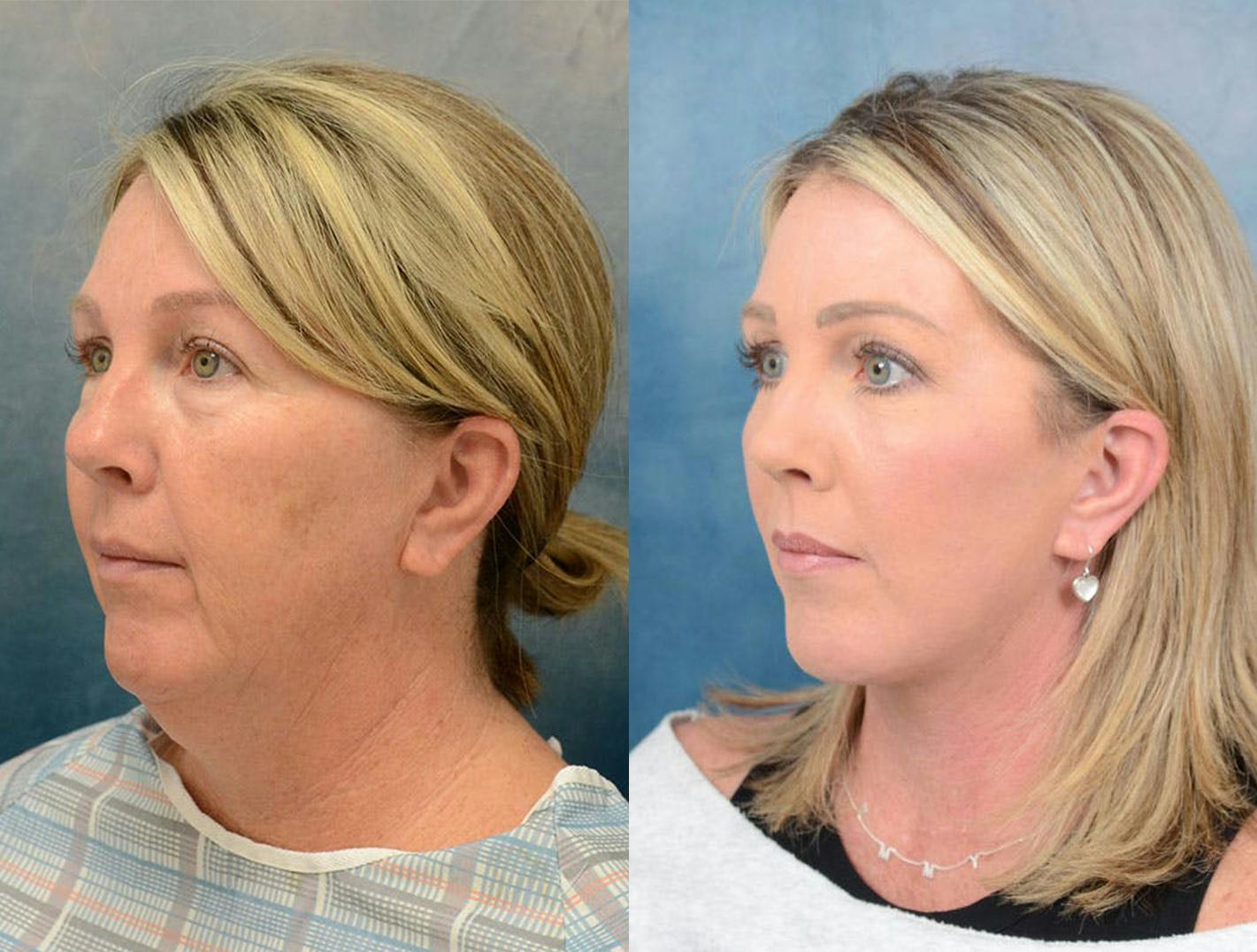Are you considering having a facelift? You’re not alone. Facelifts are increasingly popular with women and even men in their fifties and sixties who want to reverse the visible signs of aging.
But it’s important to remember that going through the procedure of getting a facelift isn’t easy or risk-free. Before you make your decision, it is vital you learn as much as possible about recovery following a facelift.
In this article, I’ll provide you with a comprehensive guide on facelift recovery processes and techniques so that you can recover quickly post-surgery with minimum discomfort and excellent results!
Table of Contents
The Day Of Your Procedure
It’s totally normal to feel a little anxious before your procedure. You’ve taken the steps needed to prepare for your facelift, now it’s time to get ready for the big day!
The most important thing you can do on the day of your procedure is to get rested. Get enough sleep the night before and remain calm during the procedure. This will help you experience fewer side effects and speed up your overall recovery process.
Don’t forget to take any pre-procedure medications as prescribed by your surgeon and avoid wearing makeup or skincare products on the day of surgery if possible. Make sure you have someone with you who can drive you home afterward.
Finally, dress comfortably in loose-fitting clothing that won’t put pressure on any treated areas after the procedure is finished. All these things should make for a smooth facelift experience from start to finish!
Right After The Procedure
It’s time to step into recovery right after the facelift procedure. Now that the operation is successfully completed, you can start taking care of your skin and re-energizing it to look healthy and beautiful once again!
In order to ensure optimal results, you need to take specific steps during your recuperation period. Here are some post-procedure tips:
- Cleanse your face gently with a mild cleanser twice daily. Avoid harsh scrubs or exfoliates.
- Apply ointment or cream to your incision site that was prescribed by your surgeon for quicker healing and scar management.
- Keep your head elevated at all times by using two pillows when lying on a bed or sofa.
One Week After
Now that it’s been a week since your facelift, you should be feeling more and more like yourself. You will be able to move your face and smile as normal, but due to redness and swelling, you may still not look exactly how you want. At this stage, you won’t need any special facelift recovery aid.
However, you will want to keep avoiding strenuous activities both in the gym and at home. You’ll also want to continue sleeping propped up on pillows so that your head is slightly elevated while lying down. This will help reduce unwanted swelling. Also, avoid drinking too much caffeine or alcohol as both can contribute to facial swelling following surgery.
At this point in time, it’s important to begin using sunscreen when outdoors (sun exposure can interfere with healing). Wearing sunglasses is also a great way to minimize sun exposure on the delicate skin around your eyes which will have had extra work done during the facelift procedure. Allowing the area plenty of recovery time is key!
Two Weeks After
Two weeks after a facelift, you will be feeling significantly better. Most of the swelling and bruising should have gone down by this point, although you may still experience some puffiness around your eyes and cheeks. The incisions made during the procedure should appear to be clean and healing properly.
It is important to keep taking the medication prescribed by your doctor and follow all instructions given regarding activity level and diet. Do not take part in any strenuous exercises or activities as they could put undue strain on the sutures and delay recovery time.
Avoid direct sun exposure as much as possible during this recovery period so that you can protect the delicate skin that was manipulated during surgery. You may gradually start to use makeup at this stage but consult with your doctor before doing so just to make sure that it is okay.
One more crucial step is to keep up with all post-procedure follow-up appointments recommended by your doctor so that they can assess how you are healing and give additional advice if needed.
One Month After
One month after a facelift, recovery is in full swing! At this point, most of your swelling should have gone down and you can start to enjoy the benefits of having a fresher and younger-looking face. You may still have some tightness or itching around the incision sites and that is totally normal.
During this time, it’s important that you do not strain your skin by pulling on it too much. This could cause the incisions to open up and slow down your recovery. Avoid strenuous activities such as exercise, heavy lifting, or any activity that puts stress on your facial muscles for at least 2-3 weeks to give your skin time to adjust after the facelift surgery.
Make sure you continue to follow all of the instructions provided by your surgeon for proper wound healing and scarring prevention. And don’t forget to take care of yourself by eating healthy, getting plenty of rest, and staying hydrated with lots of water throughout your recovery period.

How To Help Incisions Heal And Scars Appear Less Noticeable After A Facelift
There are several ways to help incisions heal and scars appear less noticeable after a facelift. The first step is to understand the healing process, which is a normal part of recovery from any medical procedure. This involves some swelling, redness, and soreness around the incisions for the first few weeks or months.
To help the healing process along, it’s important to follow all of your doctor’s post-operative instructions, such as keeping your head elevated when lying down and avoiding activities that cause excessive movement of the face. Your cosmetologist may also suggest applying topical creams specifically designed to reduce scarring.
For increased comfort during healing, use moist heat on the areas around the incisions. Avoid wearing makeup until your skin is completely healed. After this point, you can apply specially formulated cosmetic camouflage products that help disguise any remaining discoloration or scarring after a facelift surgery.




